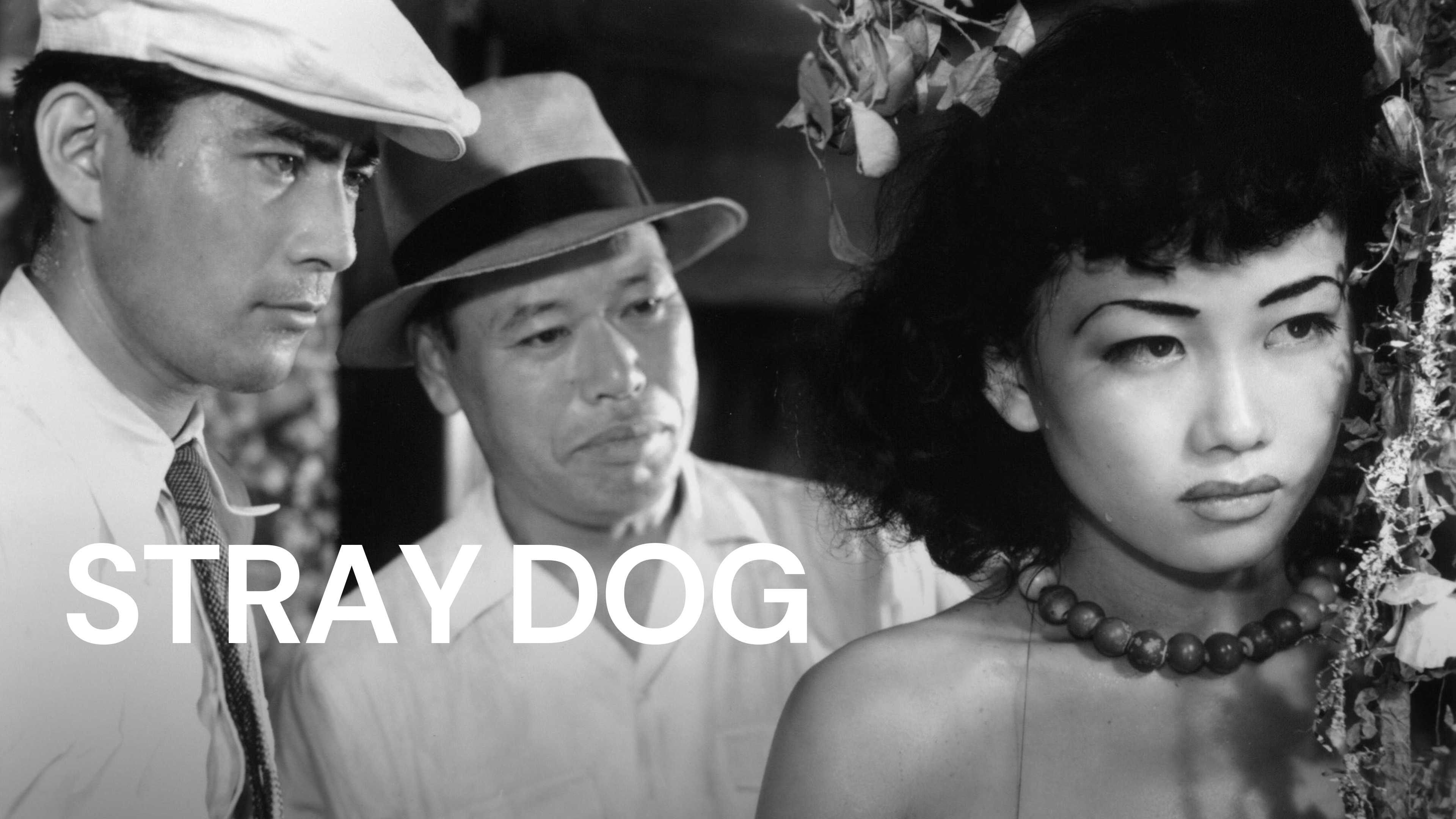
Stray Dog is a gripping crime drama that was released in 1949 and directed by the legendary Japanese filmmaker, Akira Kurosawa. This film is often overshadowed by Kurosawa’s more well-known works such as Seven Samurai and Rashomon, but it holds its own as a captivating and thought-provoking masterpiece. Set in post-World War II Tokyo, Stray Dog follows the story of a young detective named Murakami (played by the phenomenal Toshiro Mifune), who is on a mission to catch the thief who stole his pistol. As Murakami delves deeper into the underworld of crime and poverty, he is forced to confront his own morality and question the boundaries between good and evil.
Key Takeaways:
- “Stray Dog” is a gripping crime thriller set in post-war Japan, exploring themes of guilt, redemption, and the complexities of human nature. It features iconic director-actor duo Akira Kurosawa and Toshiro Mifune.
- The movie’s impactful storytelling, intense action sequences, and exploration of societal struggles continue to resonate with audiences, making it a timeless classic in the world of cinema.
Legendary Director:
Stray Dog was directed by the legendary Japanese filmmaker Akira Kurosawa.
Release Year:
The movie was released in 1949.
Crime Thriller:
Stray Dog is a crime thriller film that follows the story of a rookie detective in Tokyo.
Set in Post-War Japan:
The movie is set in the backdrop of post-World War II Japan, offering a glimpse into the country’s recovery phase.
Akira Kurosawa and Toshiro Mifune:
The collaboration between Akira Kurosawa and Toshiro Mifune is one of the most iconic director-actor duos in the history of cinema.
Toshiro Mifune’s Character:
Mifune plays the role of Detective Murakami in the movie, a rookie detective searching for his stolen gun.
Themes of Guilt and Redemption:
Stray Dog delves into themes of guilt and redemption, exploring the psychological toll of crime and regret.
Influential Cinematography:
The film’s cinematography by Asakazu Nakai is highly regarded and has had a significant influence on subsequent filmmakers.
Use of Location:
Kurosawa extensively utilizes the city of Tokyo as a backdrop, capturing the essence of post-war urban life.
Pioneering Police Procedural:
Stray Dog is considered one of the pioneering examples of the police procedural genre in Japanese cinema.
Critical Acclaim:
The movie was well-received by critics and is often hailed as one of Kurosawa’s finest works.
Exploration of Human Nature:
Kurosawa skillfully explores the complexities of human nature through the characters and their actions.
Film Noir Elements:
Stray Dog incorporates elements of film noir, with its dark and atmospheric visuals and morally ambiguous characters.
Dynamic Sound Design:
The film’s sound design, including the use of ambient sounds and music, adds depth and intensity to the viewing experience.
Symbolism and Metaphors:
Kurosawa employs various symbolic elements and metaphors throughout the film, adding layers of meaning to the narrative.
Exploration of Post-War Society:
Stray Dog offers a nuanced exploration of the challenges faced by Japanese society in the aftermath of the war.
Realistic Portrayal of Japan:
The movie is lauded for its realistic portrayal of the social and economic conditions prevailing in Japan during that era.
Influence on Future Filmmakers:
The film’s impact is visible in the work of subsequent Japanese directors and beyond.
Dynamic Action Sequences:
Stray Dog features gripping action sequences that showcase the skill and physicality of the characters.
Unexpected Plot Twists:
The movie keeps the audience on the edge of their seats with its unexpected plot twists and turns.
Character-driven Narrative:
Stray Dog prioritizes character development, allowing the audience to connect deeply with the protagonists.
Exploration of Morality:
Kurosawa challenges traditional notions of morality and explores the gray area between good and evil.
Impactful Dialogue:
The film features impactful and thought-provoking dialogue that adds depth to the storytelling.
Prodigy of Japanese Cinema:
Stray Dog is a testament to the genius of both Kurosawa and Mifune, who went on to shape the landscape of Japanese cinema.
Psychological Thriller Elements:
The movie delves into the psychological aspects of the characters, creating a sense of suspense and psychological tension.
Memorable Performances:
The performances in Stray Dog, particularly by Toshiro Mifune and Takashi Shimura, are widely acclaimed.
Exploration of Masculinity:
Kurosawa examines societal notions of masculinity and how it is influenced by the environment.
Influence on Western Cinema:
Stray Dog’s impact echoes in Western films, with its themes and style inspiring filmmakers around the world.
Relevance in Today’s World:
The movie’s themes of guilt, redemption, and societal struggles continue to resonate with audiences today.
Existential Reflections:
Stray Dog prompts existential reflections on the human experience and the choices individuals make.
Exploration of Law and Order:
The film raises questions about law enforcement and the justice system, underlining the complexities of maintaining order.
Precise Editing:
Kurosawa’s precise editing techniques enhance the pacing and tension within the film.
Struggle for Identity:
Stray Dog explores the internal and external struggles of its characters as they search for their true identities.
Emotional Connection:
The movie establishes a strong emotional connection with the viewers, evoking empathy and compassion.
Exploration of Redemption:
Redemption is a central theme in Stray Dog, allowing the characters to find hope and salvation.
Atmospheric Setting:
The film’s setting, with its dark alleys and rainy streets, contributes to the overall atmospheric ambiance.
Exploration of Human Weakness:
Kurosawa delves into the vulnerabilities and weaknesses that reside within each character.
Deep Character Relationships:
Stray Dog explores the dynamics between its characters, showcasing their relationships and interactions.
Exploration of Socioeconomic Divide:
The film touches upon the socioeconomic divide within Japanese society and its impact on individuals.
Complex Motivations:
Stray Dog delves into the complex motivations that drive its characters’ actions.
Visual Symbolism:
Kurosawa employs visual symbolism throughout the film, adding a layer of depth to the storytelling.
Exploration of Honor Codes:
The movie explores the traditional Japanese concept of honor and its significance in the characters’ lives.
Exploration of Redemption:
Stray Dog presents the possibility of redemption for its flawed characters, offering a glimmer of hope.
Echoes of Reality:
Stray Dog draws inspiration from real-life events and post-war experiences, reflecting the social landscape of Japan.
Intense Climax:
The movie’s climax builds up tension and provides a satisfying resolution to the narrative.
Exploration of Masculinity:
Stray Dog challenges gender stereotypes and explores the concept of masculinity within its characters.
Psychological Depth:
The film delves into the psychological depths of its characters, unraveling their fears, desires, and insecurities.
Timeless Classic:
Stray Dog remains a timeless classic, showcasing the mastery of Akira Kurosawa and the brilliance of Toshiro Mifune.
Conclusion
In conclusion, “Stray Dog” is a must-watch movie for any fan of crime dramas and Japanese cinema. This gripping film directed by Akira Kurosawa showcases his masterful storytelling and brilliant characterizations. With its intense plot, exceptional performances, and stunning cinematography, “Stray Dog” is a true cinematic gem that keeps you on the edge of your seat from start to finish. Whether you’re fascinated by detective stories or simply appreciate high-quality filmmaking, this movie is sure to captivate and entertain you. So grab some popcorn, get cozy, and prepare yourself for a riveting cinematic experience with “Stray Dog.”
FAQs
Q: Who directed the movie “Stray Dog”?
A: “Stray Dog” was directed by the renowned Japanese filmmaker, Akira Kurosawa.
Q: When was “Stray Dog” released?
A: The movie “Stray Dog” was released in 1949.
Q: Can you give a brief summary of the movie’s plot?
A: “Stray Dog” follows the story of a young detective who loses his pistol while commuting on a hot summer day in Tokyo. Determined to retrieve his weapon and stop the crimes committed with it, he embarks on a thrilling journey through the city’s dark underworld.
Q: What makes “Stray Dog” a standout film?
A: “Stray Dog” stands out due to its gripping storyline, exceptional performances by the lead actors, and Akira Kurosawa’s impeccable direction. The film skillfully explores themes of guilt, redemption, and the complexities of the human condition.
Q: Are English subtitles available for “Stray Dog”?
A: Yes, English subtitles are available for “Stray Dog” to ensure accessibility for international audiences.
Stray Dog's exploration of post-war Japan's struggles and Kurosawa's masterful storytelling make it a must-watch for cinema enthusiasts. Dive deeper into the complexities of post-war Japan in No Regrets For Our Youth, another Kurosawa classic. For more iconic Japanese cinema, check out Samurai 1: Musashi Miyamoto, a thrilling tale of a legendary swordsman. And if you can't get enough of Kurosawa's genius, explore the depths of Yojimbo, a groundbreaking samurai film that inspired countless others.
Was this page helpful?
Our commitment to delivering trustworthy and engaging content is at the heart of what we do. Each fact on our site is contributed by real users like you, bringing a wealth of diverse insights and information. To ensure the highest standards of accuracy and reliability, our dedicated editors meticulously review each submission. This process guarantees that the facts we share are not only fascinating but also credible. Trust in our commitment to quality and authenticity as you explore and learn with us.


